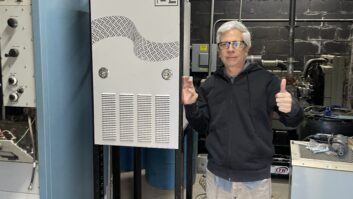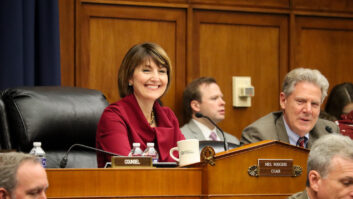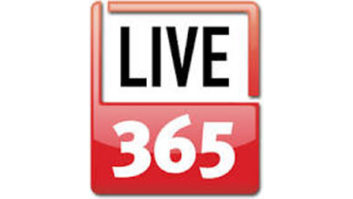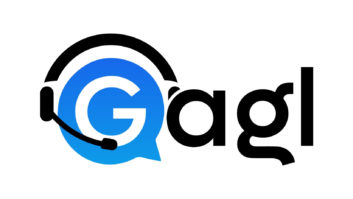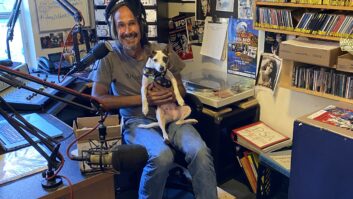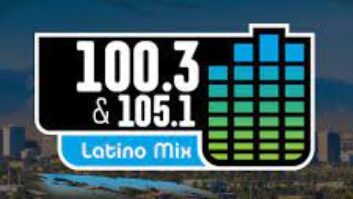Radio World continues its analysis of themes emerging from the recent NAB Show.
After months of industry speculation about efforts to help AM station owners, FCC Chairman Tom Wheeler said he intends to release a “revitalization” report and order. He said it will give AM owners more flexibility in siting towers, complying with local zoning requirements, obtaining power increases and incorporating energy-efficient technologies. He said the FCC would “adopt specific measures to address practical problems and interference-related issues that have long plagued AM stations.”

From left: Ben Downs, Ben Dawson, Greg Borgen, Andy Skotdal and Glynn Walden debate the chairman’s stance on AM revitalization and the pros and cons of going all-digital. He made the announcement during the week of the NAB Show in April.
However, the chairman believes other proposals need further study, and plans to release a further notice. This would invite comment on some sort of expansion of day/night service for AMs that serve small markets while protecting the core service areas of Class As. Bryan Broadcasting Vice President/General Manager Ben Downs afterwards said he interpreted this as a rollback of skywave protection.
The chairman also wants to explore expanded band options; he believes there’s room for additional stations at 1606 to 1705 kHz, whether stations migrating from the standard band, new stations or all-digital signals.
But Wheeler questioned a proposal that AM owners wanted most and that drew no opposition in public comments submitted to the commission: the opportunity for AM owners to take part in a special window to apply for FM translators.
He said that the number of FM translators has increased 65 percent since 2003, from 3,800 to 6,300, and that the 2003 figure would likely be more than doubled as more translator CPs are built out. Wheeler questioned whether there’s enough to go around for AMs, too.
“Nearly 4,000 translators have changed hands since the 2009 order that made them available to AM stations for the first time, including over 600 sales to AM stations,” he wrote. He asked why AMs need a special window, and also whether government should favor a given class of licensees “just because the company owns a license in the AM band.” He said he’s committed to improving operations of existing licensees as well as new entrants.
He did not explicitly mention low-power FMs; but many AM experts with whom Radio World spoke say LPFMs fear that a window would allow AMs to use up available spectrum for translators, limiting growth opportunities for their service.
In a keynote to NAB Show attendees later that week, Wheeler commented further on his translator position; he said he intends to address how FM translators can be used to benefit “not just some licensees, but all licensees, including new licensees.” NAB President/CEO Gordon Smith told reporters afterwards he needs to learn more about the chairman’s FM translator concerns.
Attorneys commenting to Radio World were puzzled by the FM translator stance. Womble Carlyle attorney and RW contributor John Garziglia said that a translator window would simply allow AM owners a chance to participate in an auction; nobody, he said, would be “given anything.”
He agreed with Wheeler that more than 600 FM translators have been sold to AMs since 2009. However, he said, AMs seek a special window because many translators are not in locations that can benefit them; translators would have to be moved closer to AM stations than now allowed in one hop.
Fletcher Heald & Hildreth attorney Harry Cole agreed. He blogged that “the raw number of FM translators currently authorized is irrelevant to the survival of AM stations if those translators don’t happen to be located in areas where AM stations can take advantage of them.”
Cole said the ability to move a translator to a place where it can be used by an AM licensee “is narrowly circumscribed” and that a new application window won’t help AMs much “unless the constraints on such moves are significantly loosened.”
The chairman didn’t specify when his AM decisions would be released, estimating it would happen in “coming weeks.”
Commissioner Ajit Pai, who has been pushing for AM revitalization within the agency since 2013, hopes the chairman will move on the AM proposals “in the next couple of months.”
DISAPPOINTED
Broadcasters on a Broadcast Engineering Conference panel about AM radio were less than thrilled with the chairman’s remarks, especially with Wheeler’s hesitation on translators.
“It’s not the news I wanted to hear,” said moderator Ben Downs, vice president and general manager of Bryan Broadcasting. AMs should be allowed broader access to translators because of rising noise levels, he said. “The argument I would make is Part 15. We didn’t make AM unlivable, the iPhones did that, and laptop computer screens and florescent lights.”
If the FCC was unwilling to enforce the excess RF emitted from Part 15 devices, “I think it’s incumbent on the FCC to fix it,” Downs said.
“It creates a real problem for us,” said Greg Borgen, owner of WDGY(AM) in St. Paul, Minn. “We were hoping we’d get some translators; now this shoots this down.” Prices for FM translators have shot up into the hundreds of thousands of dollars, becoming harder for AM owners to afford. “The cost is unbelievable for something that you have no assurance that you will be able to use.”
Downs favors moving small- and medium-market AMs to FM translators. After a year, if the new signals are not causing interference, he thinks they should be granted authorization and the owners would turn in their original AM licenses, to clear out spectrum for larger stations.
CBS Radio SVP Engineering Glynn Walden said the commission should support most of the proposals that were in the FCC’s AM revitalization proceeding. But he said the proposals on which the commission received public comment “really helped a limited few and nibble at the edge of the problem. The AM transmission system is difficult to buy and maintain.”
He said FCC practices have favored quantity over quality, which has led to sub-optimal signal coverage in many cases.
ALL-DIGITAL DISCUSSIONS CONTINUE
Reaction to the Wheeler announcement also crossed over into discussions of whether radio is ready for all-digital transmission on the AM band.
Andy Skotdal, owner of S-R Broadcasting, reacted to the news by saying, “It’s this kind of limp response that makes me wonder whether AM all-digital is ever going to happen.” But Skotdal did agree with Wheeler that the commission should allow broader use of power-saving technologies like the Modulation-Dependent Carrier Level transmission algorithm. He said he’s “saving $4,000 a month” with MDCL.
The question of a possible all-digital future for AM remains a hot one.
Skotdal’s two diplexed AMs in the Seattle metro were two of nine stations on which NAB Labs conducted field tests for all-digital HD Radio transmission and reception on the band. He liked what he heard, though he noted dropouts. “Unless your transmitter site is in the middle of the metro, the signal can’t overcome buildings.”
And he remains skeptical of any near-term move to all-digital authorizations. “When you see the FCC move in miniscule steps, and often the wrong steps, I don’t see how you can get any traction on this issue.”
Commenting on a possible move to all-digital, WDGY’s Greg Borgen said, “AM is all I know. Something has to start to move the ball forward.”
DIGITAL DRIVE TESTS COMPLETE
NAB Labs has been conducting field tests, lab tests and allocation studies related to all-digital AM HD Radio transmission and reception.
The goal is to understand the effect that all-digital AM transmission may have on the FCC’s current rules, according to NAB Senior Director of Advanced Engineering David Layer, should the industry decide to ask the commission to authorize all-digital AM HD Radio transmission.
Field driving tests for nine stations are now complete.
The big takeaways are that coverage of the all-digital AM signal “greatly exceeds” the hybrid AM HD Radio signal, said Layer. The all-digital AM HD Radio signal is “significantly more robust” than hybrid digital AM, he said. It’s also more immune to noise and interference than either analog or hybrid AM and can be received on existing HD Radio tuners.
But he said NAB Labs also learned that all-digital AM coverage is “highly dependent on co- and adjacent-channel interference” and that nighttime performance “is an issue” that needs to be investigated more thoroughly.
We’ve reported that if the FCC ever were to authorize all-digital AM transmission, it would probably do so first for daytime use only.
Co-channel interference lab testing should be wrapped up in a couple of months and Layer hopes to present those findings at the NAB Radio Show.
— Leslie Stimson
There’s no question the band will be all-digital someday, in the opinion of Hatfield & Dawson President Ben Dawson; but unanswered is which system would be used — whether iBiquity technology, or Digital Radio Mondiale, or even another system not yet in the marketplace.
But Dawson said some of his small-market clients are adamant that they will never pay a private company, meaning iBiquity, “for the privilege of going digital.”
Walden of CBS Radio said DRM would have to be vetted as HD Radio was, which could take four to five years. He is former vice president of broadcast engineering for iBiquity Digital and holds several HD Radio patents.
Panelists discussed pros and cons of a hypothetical government receiver mandate to hasten market penetration of digital receivers and discussed how much penetration would be necessary before broadcasters would convert to all-digital signals, making analog-only receivers obsolete.
The “marketplace has responded weakly” to the hybrid digital transition, according to Dawson. He and Skotdal support a receiver mandate, including AM digital chipsets, similar to how television made its digital transition. Walden also supports a mandate but doubts it will happen due to NAB opposition.
Skotdal said he’d consider going all-digital once HD Radio receiver penetration hits about 70 percent; Walden doesn’t believe radio owners would be willing to let go of the remaining 30 percent of their audience.
They also debated whether a radio migration to television analog Channels 5 and 6 would be feasible, considering the upcoming television spectrum auction and subsequent repack. Skotdal believes there would be room for radio and that this might be a better long-term solution than all-digital on AM because of the rising noise floor on the band. Downs doubts radio would be allowed allocations on analog Channels 5 and 6 “without a fight.”
On this panel, a majority of speakers agreed there should be fewer AM stations on the analog band to reduce noise. But it is a provocative and controversial idea for AM owners. Skotdal had posed this suggestion in a commentary in Radio World earlier this year, and said he subsequently was threatened by a small-market broadcaster about it.
Should the industry decide to seek FCC authorization for all-digital on the band, Skotdal says there are a laundry list of things to consider first, including standards for all-digital allocations, interference and an HD carrier mask. He also mentioned controlling conversion costs, increasing receiver penetration, creating licensee incentives, developing affordable field testing gear and setting digital sunrise and analog sunset dates.
Several panelists repeated a theme of recent years: that time is running out for AM. “There are some days I fear that we can see our shelf life,” said Downs.
Walden said, “I love AM radio. I want to see it get better and survive. … Analog is an historical artifact that we need help to move on from our regulators.”
Dawson added, “I don’t think analog [AM] will ever go away, but in large, industrialized countries its practical use is slowly fading.”





